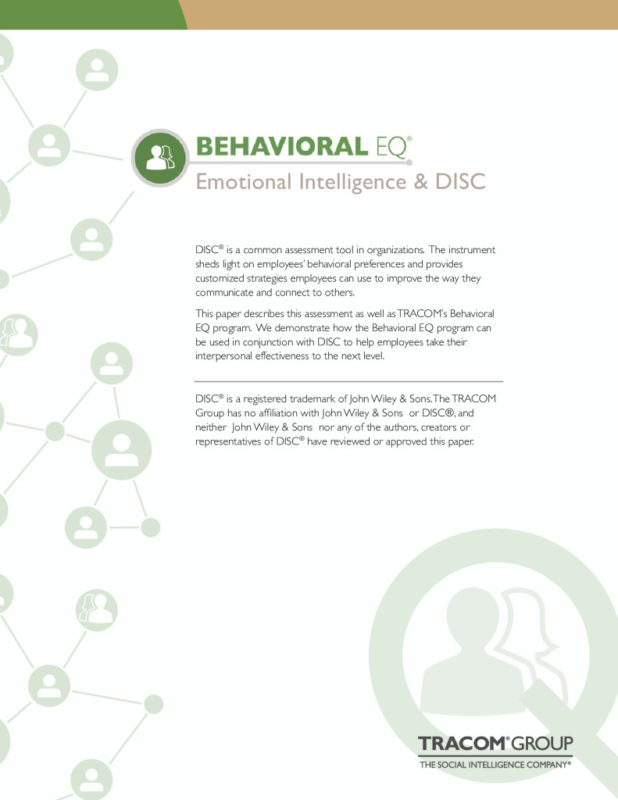The DISC instrument is based on original work done by William Moulton Marston in the 1920s created for studying individuals’ sense of power in relation to their environment and how this manifests itself in terms of human behavior. Today, the DISC tool in intended to improve work productivity, teamwork, and communication by describing individuals’ behavior and providing strategies for interpersonal effectiveness.
What does DISC stand for?
DISC offers insight into individuals’ behavioral differences across four primary dimensions:
- Dominance refers to the extent to which an individual places emphasis on achieving results, winning, and affecting the bottom line. Those who are high on this dimension actively deal with challenges, move straight to the point, and are interested in the big picture.
- Influence refers to the extent to which an individual places emphases on persuading and convincing others. Those high on this dimension value relationships and openness and display a palpable sense of optimism and enthusiasm.
- Steadiness is the extent to which an individual places emphasis on cooperation, security, and sincerity. Those who are high on this dimension are people-oriented, they prioritize supporting and developing a personal connection with others.
- Conscientiousness is the extent to which a person places emphasis on quality, accuracy, and competency. Those who are high in this are motivated by opportunities to learn and submit high quality work.
The DISC profile shows learners’ pattern across the four dimensions and provides information about such things as the individuals’ goals and values, how they try to influence others, what value they bring to their organization, and their potential weaknesses. The profile then offers broad behavioral guidelines for increasing their effectiveness.
What is Behavioral EQ?
Behavioral EQ is a model of interpersonal effectiveness, comprised of emotional and behavioral intelligence. Emotional intelligence refers to how we identify and understand our own emotions and the emotions of others. Behavioral intelligence is more observable to others and refers to how we manage personal behavior and relationships. The Behavioral EQ model consists of fifteen skills that are most meaningful and predictive of job performance.
Behavioral EQ and DISC
With DISC, no profile pattern is better than another. People of all patterns can be effective, though certain patterns may naturally thrive or fit better in specific roles and occupations. Behavioral EQ, however, is critically important and linked to outcomes such as increased performance, leadership, customer service, and sales.
There are several ways in which the Behavioral EQ program enhances interpersonal effectiveness, beyond what is provided by DISC. First, the Behavioral EQ assessment is multi-rater. This means learners not only complete the assessment about themselves, but they nominate other raters to complete the assessment about them as well. Second, the Behavioral EQ program teaches learners about a fundamental bias that holds humans back from communicating and connecting with others effectively – this is the negativity bias. The third way in which Behavioral EQ complements DISC is by teaching learners how to manage their thoughts, emotions, and behaviors to optimize interpersonal effectiveness. Through Behavioral EQ training, learners gain concrete strategies based on the latest research in neuroscience and psychology that they can use to increase their effectiveness in each of the skill areas.
To learn more about Behavioral EQ click here.
To learn more about the connection between EQ and the DISC model click here.

 New Horizons
New Horizons
 Project Management Academy
Project Management Academy
 Six Sigma Online
Six Sigma Online
 TCM Security
TCM Security
 TRACOM
TRACOM
 Velopi
Velopi
 Watermark Learning
Watermark Learning
 Login
Login

